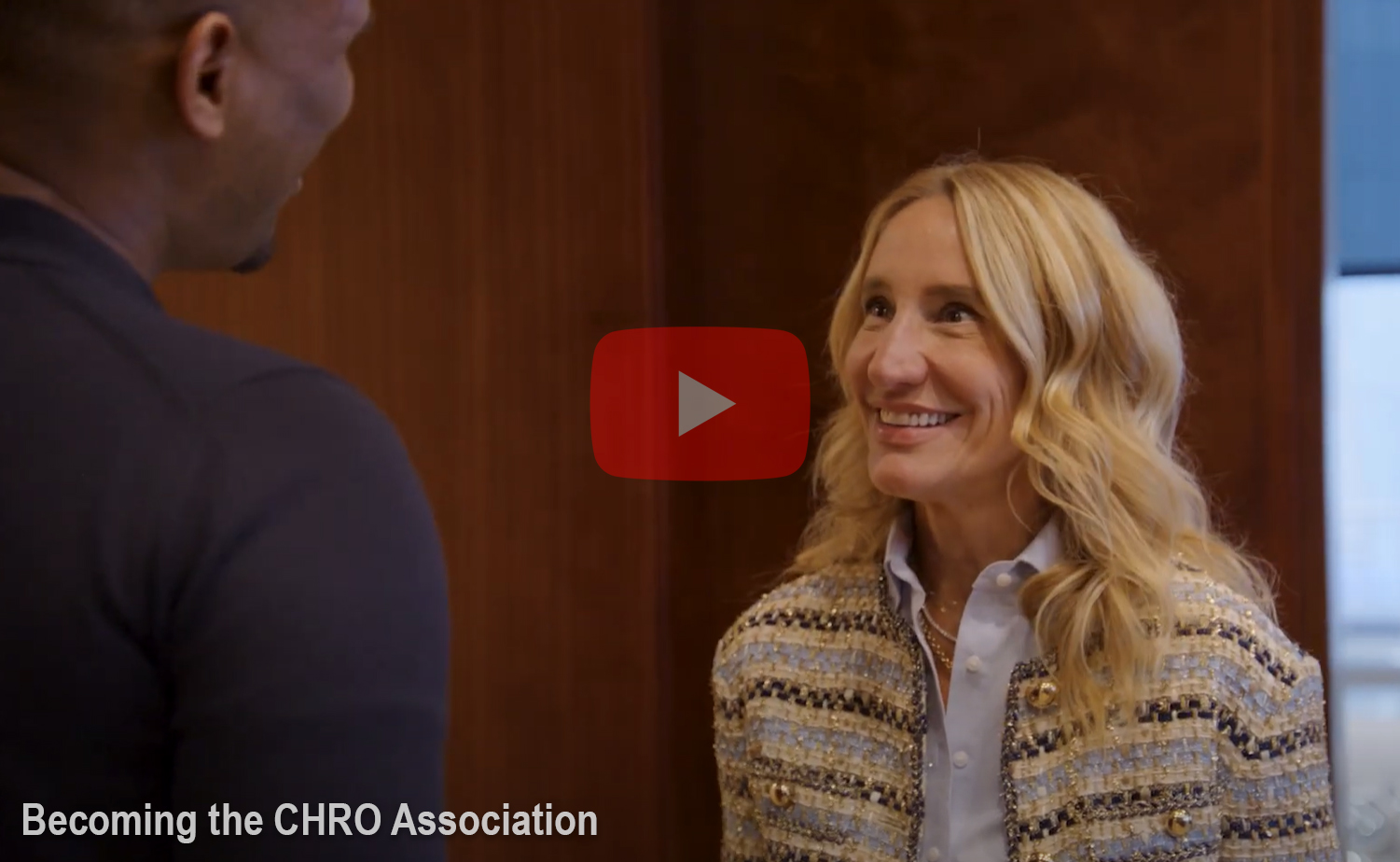The Fall Forum was a transformation milestone as we introduced our new brand identity: the CHRO Association. Built on the pillars of community, expertise, and advocacy, the new brand reflects the evolving landscape and growing influence of today’s CHROs—and the power of coming together to shape the future of work.
The updated name of our fall meeting—the CHRO Fall Forum—itself exemplifies this evolution.
Welcomed by Board Chair Tim Richmond and Association CEO Tim Bartl, attendees experienced a program designed to address the most pressing challenges and opportunities facing today’s CHROs.
From David Axelrod and Kellyanne Conway offering sharp political insights, to Duke Energy’s CEO–CHRO partnership, to powerful discussions on DEI and immigration, workplace AI, and succession, the sessions were curated to infuse members with practice-based insights while sparking the kind of candid dialogue that can only happen within a trusted peer community.
The Fall Forum showcased what our new brand promises: a community of peers who push one another to new heights, an unrivaled source of insight on the issues that matter most, and a collective voice that elevates the influence of CHROs and their companies.
Read highlights from the Forum below and take a look at our new CHRO Association video that kicked off our meeting.
The Political Outlook: Straight Talk from the Left and Right
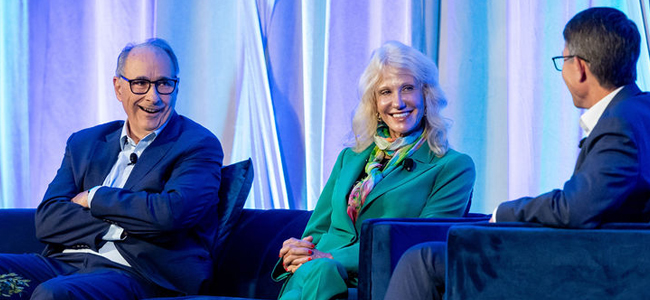
On the Forum’s opening night, two veteran Washington insiders—Democratic commentator David Axelrod and Republican commentator Kellyanne Conway —shared sharp contrasts and unexpected points of agreement in a conversation with Tim Bartl, exploring today’s political landscape and its impact on business leaders.
Formative Sparks:
The son of refugees, David Axelrod recalled watching John F. Kennedy campaign in New York as a child. “I was transfixed by the sense of importance. You can grab the wheel and turn in the direction we think best. The future is not a gift—it’s an achievement.”
For Kellyanne Conway, the spark came in Reagan’s America: “I was raised by women in a blue-collar household. By every metric, I should have been a Democrat. But I was inspired by Reagan and later hired by one of his pollsters where I learned my craft.”
Jobs and the economy:
“The economy is how Trump won—people wanted the pre-COVID economy back,” explained Conway, “Voters were willing to set aside whatever they don’t like about him. While we like to talk about what offends us. We vote on what affects us.”
Axelrod commented that “Trump is lighting fires in 100 different places. Democrats need to decide where to play—and their focus should be on the economy. We have yet to see how things are going to work out, but it’s tough for both Democrats and Republicans if they have to defend an economy that’s not working.”
Artificial Intelligence: Both flagged AI as the next major disruption.
Conway pointed to opportunity as well as risk, “AI can be a tool for good—but it will raise questions of fairness and jobs.”
Axelrod added urgency, “We’re about to be hit with a tsunami. What is our national strategy for both worker dislocation and keeping AI centers powered? We need to address these instead of barreling into the future.”
Diversity, Equity & Inclusion:
“Many companies are quietly unwinding DEI programs and feeling relieved,” Conway said, framing DEI as a fairness issue.
Axelrod cautioned that heavy-handed government involvement only compounds the pressure on CHROs: “Your jobs are already too hard—you don’t need Washington telling you how to run your company.”
Future of Politics:
On the Republican Party’s future, Conway emphasized that Trump has changed the expectation of Americans—they want to be brought in. “Whether you like it or not, he presides over the democratization of information—televised cabinet meetings and 3-hour podcasts. Whoever follows Trump will face competition from governors and senators who’ve been waiting in the wings, including some we haven’t even thought of.”
Axelrod advised Democrats to look inward: “Trump is the greatest salesman in the history of American politics. But you can’t jawbone people into thinking that the economy feels stronger than it does. Democrats need a leader who can criticize both sides and focus on real reform.”
A Note of Optimism: Despite disagreements, both ended on a hopeful note.
Conway pointed to America’s 250th birthday: “There’s more that binds us than divides us. We should stop plowing the same ground and find ways to come together.”
Axelrod echoed with cautious optimism: “I’m a skeptical idealist. The only thing that dooms us is if young people decide they don’t have a role to play. And I don’t see that happening.”
CEO–CHRO Partnership Fuels Duke Energy’s Growth Mindset
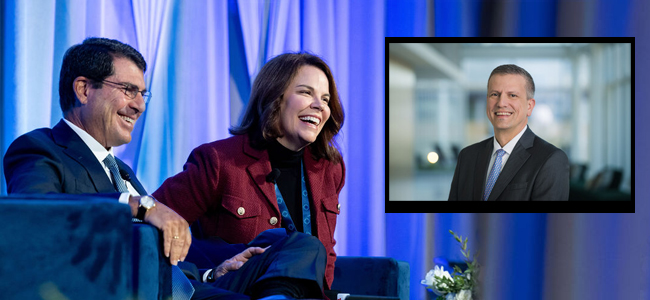
In a candid fireside chat with Marc Feigen, Founder and CEO of Feigen Advisors, newly appointed Duke Energy CEO Harry Sideris (joining the conference by video) and CHRO Cameron McDonald discussed how they collaborate on strategy, technology, and talent at a growing electric utility.
Energy is the cool kid: “Energy use is increasing tenfold mainly due to AI data centers,” remarked Feigen as he set the tone for the challenges Duke Energy faces shifting from a traditional utility mindset to a growth-oriented culture. In the short four months with Sideris at the helm, Duke Energy stock is up, and it just signed a major deal with Amazon to power a data center.
Vision, influence, and partnership at the core: The two leaders described a partnership where the CHRO acts as a crucial link between front-line employees and the C-suite. McDonald explained that the CHRO provides the “real truth” by listening to employees and translating sentiment into action. Sideris agreed, noting that the CFO and CHRO together ensure strategy is underpinned by what’s happening on the ground.
Bring the bad news. Sideris described McDonald as willing to “embrace the red” and make sure the leadership team elevates bad news to the CEO. “Just because you don’t get any bad news, doesn’t mean it isn’t there—by the time you find out, it’s too late.”
Embrace constructive feedback. To accelerate the company’s work powering data centers, created a “Red Team” approach—bringing together multiple units to accelerate learning and problem-solving. Sideris and McDonald stressed the importance of candid conversations and not overreacting to unwelcome news, so issues are surfaced early and addressed with clear solutions.
AI and the future of work: Sideris also noted the importance of his collaboration with McDonald and his CIO on the implementation of AI. Strong AI and technology governance in the energy sector is always top of mind, “Lots of people would like to get into our grid and cause problems,” Sideris noted.
McDonald is focused on employee adoption of AI, “Whenever employees can use the tools to solve their pain points, it takes fear off the table. Getting employees comfortable using AI day to day will help prepare them for the big rocks—first we increase acumen then bring people together to solve problems.”
Marc Feigen summed up by saying “When you turn the light on in the kitchen, thank Cameron and Harry.”
“Have Alternate Plans Ready”: Preparing For Immigration and DEI
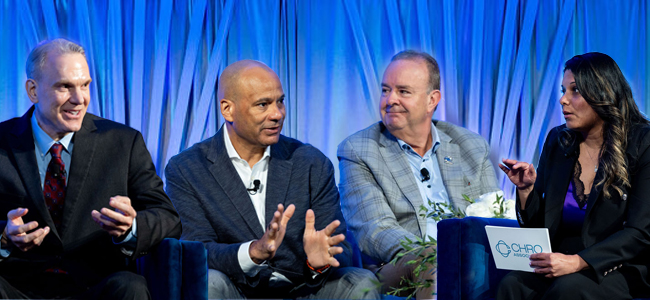
Covering policy trends, cross-border hiring, talent development, and long-term planning for a global workforce, Chatrane Birbal of the CHRO Association led a conversation with Tim Massa from Kroger, Eric Dozier from Eli Lilly, and immigration policy expert, Stuart Anderson.
Anderson set the stage on the Trump Administration’s approach to immigration policy. “The Administration is cutting off the immigration talent pipeline—no OPT or STEM OPT,” referring to “optional practical training” that allows students to remain in the US and work beyond graduation.
He urged companies to “think like the Pentagon thinks” by preparing for any category of talent that you use to be taken off the table. “Have war plans on your shelf and ready to go” if these categories are removed.
Immigration pain points: Anderson noted that the number of foreign-born workers has dropped by 1.2 million since January. “Stay engaged in these issues,” warned Anderson, “every day may be something new. Have plans for every eventuality and look at a timeframe ten years down the road to prepare for where you can find talent.”
Kroger’s challenge, according to Massa, is finding qualified workers as it looks to open 100 stores per year for the next 15 years. “Food is everywhere, and competition is everywhere,” he said. Massa also discussed Kroger’s strategy of having strong, localized partnerships with farmers and meatpackers to secure their agricultural supply chain.
Eli Lilly has always gone “where the talent is,” commented Dozier, noting the advances in medicine that driven by people who immigrated to the U.S. Lilly is especially concerned about the continued support for basic science and how U.S. competitiveness will be limited and Lilly’s pipeline challenged if the Administration sees through its plans to limit the amount of time international students can stay.
Lilly provided educational initiatives and legal support to their employees, recognizing that even though their employees are here legally, they may have family members in a different immigration status. The company has trained plant supervisors on ICE raids, centralized I-9 approvals, and encouraged employees who may travel abroad to monitor what they post on social media.
DEI pain points: HR Policy Staff discussed a Justice Department initiative to investigate whether certain federal contractors’ diversity practices violated the pledge to comply with discrimination law as part of federal contractor certifications. Discussing DEI generally, member companies focused on company culture and values:
Dozier advised his fellow CHROs to “reinforce core values—what you do and why inclusion matters. If you cannot put things in writing, show up. That communicates.”
Massa added, “What’s your purpose and what is the people enablement to your business? Stay true to what you’re about.”
CHROs Center Stage in AI Adoption
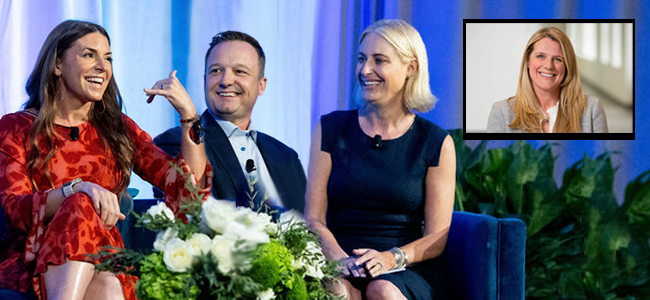
Across use cases, governance guardrails, and workforce adoption, the CHRO’s role has emerged as the connective tissue for successful AI adoption. In a panel moderated by Cara Brennan Allamano, Chiefs from leading companies shared how they are piloting and scaling AI in partnership with business-unit leaders.
Moderna: Focus on workflow strategy. Tracey Franklin, Chief People and Digital Technology Officer at Moderna (joining the conference by video), described how she examines the flow of work in a way that is function and leader agnostic. “How do we apply technology to that and wrap human capability around it?”
Moderna merged HR which has traditionally handled workforce planning, and IT, which handles tech planning, to reveal a new way to look at work—breaking tasks apart, mapping workflows, and then asking where technology could play a role.
Tracey’s advice, “Grab the AI agenda if it’s floating without a home.” Even without restructuring roles, HR can lead by identifying first use cases that everyone understands, then building momentum from there. Her company rolled out democratized access to generative AI tools, created an internal AI academy, and now she oversees more than 3,000 custom GPTs integrated into the flow of work.
Marriott: AI through a people-first lens. Ty Breland underscored Marriott’s commitment to people-first adoption. With 10,000 properties in 143 countries, Marriott focuses on use cases that make jobs better for associates while improving customer experience. Its first major AI tool—used in customer engagement centers—was designed to remove administrative burdens so staff could focus on human connection at critical times.
Breland was clear-eyed about the workforce implication, “Don’t pretend jobs won’t change. Help associates build skills so they can move into new roles. Sometimes all they need is confidence.”
Lattice: People + AI = Superpowers. Sarah Franklin, the CEO of Lattice (no relation to Tracey), framed AI as a change management challenge more than a tech challenge. Her focus is on giving people “superpowers” through AI while ensuring accountability, ethics, and cultural alignment. She also reminded her peers, “We are making decisions with headcount dollars—are we hiring a human or an AI agent?” She also urged HR leaders to prepare for “agentic workforces,” where AI agents need governance, identity, and defined roles just like employees.
Key Takeaways:
HR is uniquely positioned to lead enterprise AI adoption by connecting strategy, talent, and technology.
Start small, scale fast: Identify an understandable use case, prove value, then expand—see what’s working and scale it quickly.
Governance is essential: Clear rules, accountability, and agent identity are critical. Always have a human in the loop, especially in highly regulated fields.
ROI requires smart AI use: Evaluate jobs and roles based on skills, then identify ways to augment through automation. Shift what tasks employees are doing before you launch AI solutions to ensure you get a model that increases efficiency.
Spend time on data hygiene: As you adopt AI internally, make sure the workforce understands that work folders are not personal folders to maximize AI opportunities and avoid exposure of personal data.
The CHRO’s Rising Role in CEO Succession

On this panel, Ani Huang of the CHRO Association and Professor Anthony Nyberg of the Center for Executive Succession unpacked the findings of a joint study on how CHROs can help boards avoid succession pitfalls. Sheri Bronstein and Michael White added their candid, behind-the-scenes look on how to get CEO succession right.
CHRO’s role. “From the board’s perspective, getting the next CEO right is the most important job,” said Nyberg. “When you have a highly engaged CHRO, it dramatically improves the process. In certain cases, directors even see the CHRO as a more important part of the process than the outgoing CEO.”
Ani Huang agreed, noting that CHROs have the opportunity to influence not only the pipeline but also the board’s understanding of future leadership needs. “If you recognize where there are challenges, the CHRO can nudge the board in the right direction. That influence is powerful.”
The phases of succession. From the perspective of a board director, Michael White emphasized that succession planning must be treated as a continuous process, broken into phases: talent development, selection and assessment, and transition.
“The best boards engage the CEO in the process, but you have to start with sensitivity,” he said. “Talent development begins as soon as a new CEO is appointed—identifying top talent and building a framework. When you get down to selecting a successor, that’s a 10–12 month process where the board has the ultimate responsibility.”
Sheri Bronstein added that focusing on one CEO candidate only is a mistake. “Our role is to develop a great pool of talent so when you get to phase two, the board has strong options. Even if someone isn’t chosen as CEO, you’ve built a stronger management team. The key is keeping communication open with the board on what critical capabilities are needed as those evolve.”
Defining the future CEO. Boards often stumble by basing criteria on what they liked about the current CEO rather than what future leadership capabilities the company will need. “One idea is to interview all board members to surface their perspectives. The CHRO can oversee that and make sure the board aligns on the future profile,” Nyberg suggested.
White added that boards must get specific. “Do you need a turnaround person? A tech innovator? CEOs today face incredible demands. Beyond strategy, they must demonstrate integrity, inspire confidence, and lead with political savvy. Sometimes you don’t know the right answer—only the least-wrong answer.”
Navigating politics. Political savvy is essential. “I’ve seen CHROs get fired for going around the CEO to the board,” warned White. “If the board asks for your view, you can deliver it—but make sure your CEO already knows what you’ll say.”
Bronstein stressed transparency in talent development moves. “Sometimes you place someone in a role to stretch them, even if it’s disruptive. Be clear with the board about why you’re doing it. And don’t underestimate the value of bringing in outside coaches or former CEOs to give your future leaders perspective.”
Advice for new CHROs. Bronstein offered practical guidance: “Invest the time up front to get to know the board—have coffee, learn their perspectives, understand their experiences. Many directors have been through CEO transitions themselves. And leverage your CHRO peers; they can give you invaluable advice.”
CEO succession will always be complex, but when boards and CHROs work in true partnership, the odds of getting it right rise dramatically.
Securing the Next-Gen CHRO
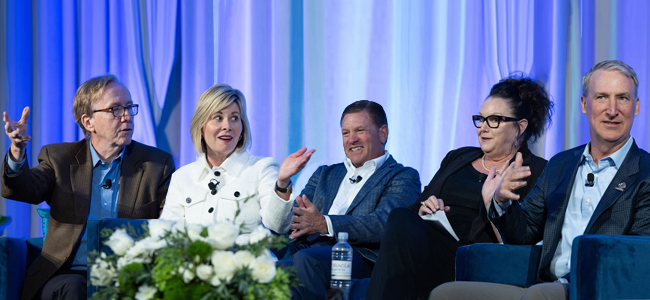
Our concluding session explored the pathways that prepare high-potential leaders for the top HR seat. Lucien Alziari led the panel including fellow recently-retired CHRO, Tim Richmond, and newly appointed CHROs Michelle Green and Deborah Wintner. Stephen Patscot shared data insights from Spencer Stuart’s latest research.
Shifting landscape. As the CHRO role has elevated in importance and complexity, CEOs, Boards and other stakeholders have higher expectations for the next generation. This makes succession planning even more critical for sitting CHROs and their CEOs.
Steve Patscot noted that today’s CHRO turnover is closely tied to CEO turnover, now at record levels. For S&P 500 companies, CHRO turnover sits at around 9%, with more than half of new CHROs promoted internally. Strikingly, about 60% of current CHROs are in the role for the first time—underscoring both the opportunity and the challenge of leading in a dynamic environment.
Clarity on needs. “Succession for what?,” Lucien Alziari asked—whether boards are seeking continuity, change, or a new leadership profile, shapes the right choice. Alziari also advocated for self-imposed term limits, noting that after eight years in the role, a CHRO has likely achieved what they can—and should open the way for new leaders.
Internal vs. External: A strategic choice. Panelists agreed that Boards often follow an “80% rule”—if an internal candidate is nearly as strong as an external contender, internal is usually safer for culture and continuity.
Pathways to readiness. Panelists shared practical approaches for preparing future CHROs. Common elements included:
Board exposure: Boards, meanwhile, are focused on de-risking transitions. Successors need opportunities to interact with directors, whether at formal meetings or informal dinners, to build trust and familiarity.
Diverse experiences: Broader assignments, cross-functional work, and executive coaching help build resilience and perspective.
Multiple candidate profiles: Rather than grooming one “chosen one,” some organizations prepare a range of profiles—such as a change agent, a stabilizer, or a safe pair of hands—to give the board real options.
Clear development paths: Candidates value honest feedback and developmental roadmaps tied to the CEO’s leadership profile and organizational needs.
As Michelle Green shared of her own path. “It could be a 10-year interview. If you can’t handle the stress of competing for this chair, you probably shouldn’t be in it.”
Deborah Wintner offered a contrasting story—thrust into an interim CHRO role during a CEO transition without prior board exposure. With coaching, resilience, and strong peer support, she proved herself to the board. Her experience underscored the unpredictability of succession and the importance of being prepared for unexpected opportunities.
Closing wisdom. In the end, CHRO succession is not just about picking a name—it’s about building a credible process, developing a strong bench, and protecting the integrity of the profession. In short, leave the role stronger than you found it.
Fall Forum 2026 – Mark Your Calendar
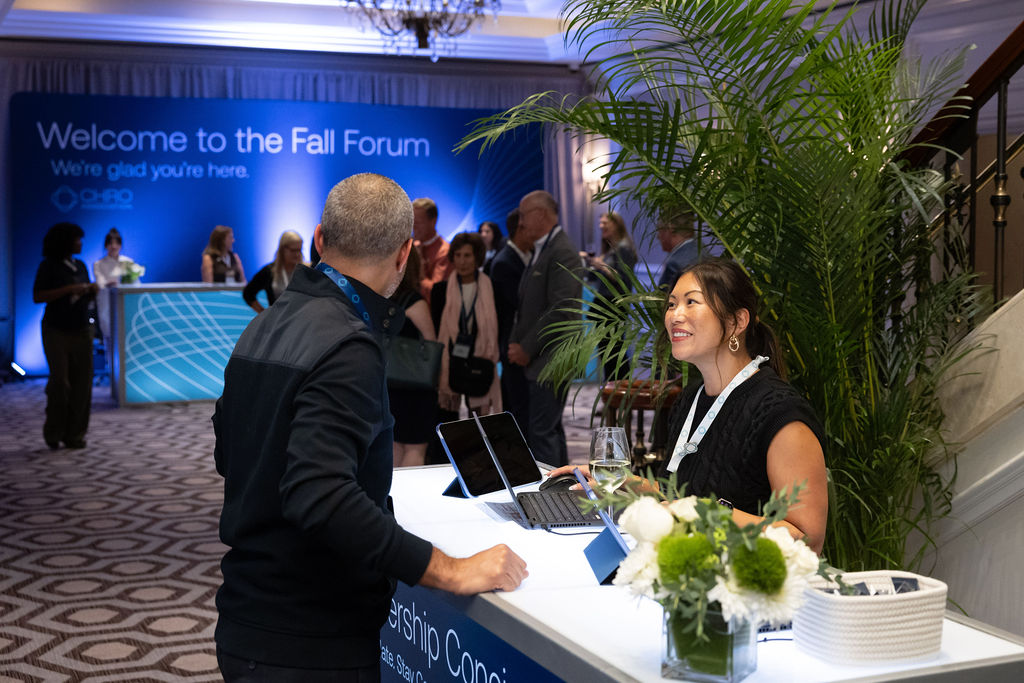
📆Mark your calendars for next year’s Fall Forum at the Ritz-Carlton in Washington D.C., September 9-10, 2026. You won’t want to miss it!
Published on:
